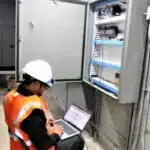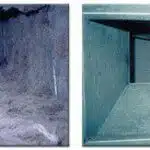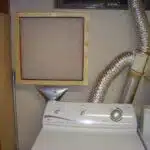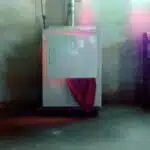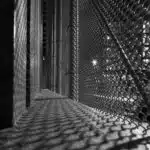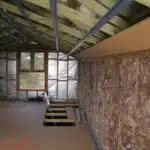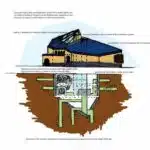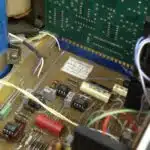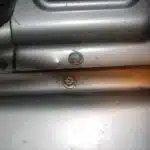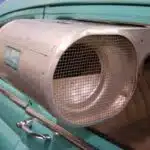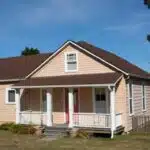Installing central air conditioning in your home can be a significant investment, but it’s one that is well worth it when the temperatures start to rise. Central air is a convenient and efficient way to cool your home and make it more comfortable during hot summer months. However, many homeowners are hesitant to install central air because they’re unsure of the cost. In this article, we’ll explore how much it costs to install central air conditioning and what factors can affect the price.
As an HVAC technician/specialist, I understand how important it is for homeowners to have access to accurate information about the cost of installing central air conditioning. There are several factors that can influence the overall cost of installation, including the size of your home, the type of system you choose, and any additional features or upgrades you may want. By understanding these factors and working with a trusted HVAC professional, you can get an accurate estimate of the cost and make an informed decision about whether or not central air conditioning is right for your home.
The Benefits Of Central Air Conditioning
Central air conditioning is an essential component of modern living that offers numerous benefits. From improved comfort to energy efficiency and environmental impact, central air conditioning is a worthwhile investment for any homeowner. As an HVAC technician, I have seen firsthand the positive impact that central air conditioning can have on homes.
One of the most significant benefits of central air conditioning is its energy consumption efficiency. Compared to window units or portable air conditioners, central air conditioning uses less energy to cool a home. This means lower utility bills and reduced environmental impact. Additionally, central air conditioning provides consistent cooling throughout the entire home, eliminating hot spots and ensuring optimal comfort levels.
Another benefit of central air conditioning is its ability to improve indoor air quality. By filtering out pollutants and allergens, it can greatly benefit individuals with respiratory issues or allergies. In addition, centralized systems are much quieter than individual units and offer more precise temperature control.
Factors such as size of the home, ductwork requirements, and other installation considerations will ultimately influence the cost of installing a central air conditioning system. However, the benefits far outweigh any initial costs associated with installation. With proper maintenance and upkeep, homeowners can enjoy reliable cooling for years to come while also reducing their energy consumption and environmental impact.
Factors That Influence The Cost Of Installation
When it comes to installing central air, the cost can vary based on several factors. One of the most significant factors that influences the cost is the installation timeline. If you need your central air installed quickly, you may have to pay more for expedited services. On the other hand, if you’re willing to wait a little longer for installation, you may be able to save some money.
Another hidden cost that can impact the overall price of central air installation is additional work that needs to be done before or during installation. For example, if your home’s electrical system isn’t up to code, you may need to hire an electrician to make necessary updates before the central air can be installed safely. Similarly, if your ductwork needs repairs or modifications, this will also add to the overall cost.
It’s important to keep in mind that there are many factors that influence the cost of central air installation beyond just the unit itself. By taking all of these factors into account and working with a qualified HVAC technician/specialist, you can get an accurate estimate of what it will cost to install central air in your home. In the next section, we’ll explore how the size of your home impacts the overall cost of central air installation.
Size Of Your Home
As a HVAC technician, I understand that every home is unique and requires a specific central air system. One of the most significant factors to consider when installing a central air system is the size of your home. The size of your home determines how much cooling power you need from your central air unit. Therefore, it’s essential to ensure that you purchase a central air conditioning system with enough capacity to cool your entire home.
Home size considerations are critical when determining the cost of installing a central air system. Generally, the cost increases with square footage. For example, a smaller home may require an AC unit with 1 or 2 tons of cooling capacity that costs approximately $3,000 to $4,000. In contrast, a larger home may require an AC unit with 5 or 6 tons of cooling capacity that can cost between $7,000 and $10,000.
When considering the cost comparison by square footage for central air installation, it’s essential to keep in mind that there are several other factors to consider besides the size of your home. These factors include ductwork installation and any necessary upgrades and repairs. Additionally, several other factors determine the total cost of installing a central air system in your home such as location and accessibility, which we will cover in our next section on ‘type of system you choose’.
Type Of System You Choose
Split systems are the most common type of air conditioning system and can be used to cool a single room or an entire home. These systems are comprised of two separate units, an outdoor unit and an indoor unit, and can be installed in a variety of locations. Installation costs for split systems vary depending on the size and complexity of the system, but typically range from $3,000 to $7,000. Packaged systems are a single self-contained unit that is usually placed on the roof of a home. Installation costs depend on the size of the unit, but typically range from $5,000 to $7,000.
Split System
As an experienced HVAC specialist, I understand the importance of installing a split system for central air conditioning. A split system is a type of central air conditioner where the compressor and condenser are located outside, while the evaporator is situated inside the house. This type of system is ideal for houses without ductwork or those with limited space.
When it comes to cost breakdown, installing a split system can be affordable compared to other types of central air conditioning systems. The installation process involves mounting the outdoor unit on a concrete pad, running refrigerant lines to connect the indoor and outdoor units, and setting up an electrical connection. The indoor unit is then installed within the house, usually in an attic or closet space. Depending on your needs, additional components such as a thermostat or air cleaner may be included.
The installation cost of a split system depends on several factors such as the size of your home, location, and level of complexity involved in installation. However, you can expect to pay between $2000-$8000 for a new installation. Although this might seem like a lot initially, you’ll enjoy long-term savings on energy bills due to its high efficiency ratings. Overall, investing in a split system for your central air conditioning needs is a wise decision that will keep you cool and comfortable all year round.
Packaged System
Moving on from split systems, another type of central air conditioning system to consider is a packaged system. Unlike a split system, a packaged system houses all the components in one unit that is typically installed outside the home. The unit contains both the evaporator and condenser coils, as well as the compressor and blower motor. This type of system is ideal for homes with limited indoor space or without an attic or basement.
The installation process for a packaged system involves mounting the unit on a concrete pad or rooftop, connecting it to ductwork within the house, and setting up an electrical connection. Because all components are housed in one unit, installation tends to be simpler than that of a split system. However, maintenance requirements may be higher due to its single-unit construction.
When considering which type of central air conditioning system to choose for your home, it’s important to weigh the pros and cons of each option. While a split system may offer flexibility in terms of placement and lower long-term energy costs, a packaged system may be more suitable for those with limited indoor space. Ultimately, choosing the right type of system depends on your individual needs and preferences.
Additional Features And Upgrades
When it comes to installing central air, the cost can vary depending on the type of system you choose. However, there are additional features and upgrades that can further impact the final price. Smart thermostats and zoning systems are two popular upgrades that can increase comfort while reducing energy costs.
Smart thermostats allow for remote control of your HVAC system through a mobile device or computer. With programmable schedules and advanced sensors, they can learn your preferences and automatically adjust the temperature accordingly. Zoning systems, on the other hand, divide your home into different zones with individual temperature controls. This allows for greater customization and energy efficiency as you only need to cool the areas that are being used.
Air purification and humidity control are two other upgrades that can improve indoor air quality. Air purification systems use filters or UV light to remove contaminants such as dust, pollen, and bacteria from the air. Humidity control systems help regulate moisture levels in your home which can prevent mold growth and reduce respiratory issues.
It’s important to consider these additional features when planning for a central air installation. While they may increase the initial cost, they can provide long-term benefits in terms of comfort, energy savings, and improved health. As an HVAC professional, I highly recommend exploring these options with your contractor to ensure you get the most out of your investment.
Choosing The Right Hvac Professional
- It is important to select a qualified HVAC professional when seeking services related to central air installation.
- Factors such as experience and certifications should be considered when assessing the qualifications of a potential contractor.
- Obtaining cost estimates from multiple HVAC professionals is recommended to ensure a fair price is being charged for the installation.
- A review of the contractor’s past work and references from former clients can help to determine the quality of their services.
- When hiring an HVAC professional, it is important to establish clear communication regarding expectations and timelines.
- A thorough assessment of the HVAC professional’s qualifications, cost estimates, reviews, and references should be conducted prior to beginning the installation process.
Qualifications
Qualifications are essential when choosing the right HVAC professional for your central air installation needs. It is important to look for a licensed and certified technician to ensure that they have met the requirements set by the state, which demonstrates their knowledge and expertise in the field. A qualified HVAC professional should also possess adequate insurance coverage to protect you from any accidents or damages that may occur during the installation process.
Aside from licenses and insurance, qualifications also include relevant experience and training. An ideal HVAC technician has several years of experience in installing central air systems, which means they have encountered various challenges that require problem-solving skills. They should also be up-to-date with the latest technologies and trends in the industry through ongoing training programs to keep their skills sharp.
In conclusion, choosing a qualified HVAC professional for your central air installation needs is crucial to ensure a safe and efficient system. These qualifications include proper licensing, insurance coverage, experience, and ongoing training. By prioritizing these qualifications when selecting an HVAC technician, you can be confident that your central air system will be installed correctly, giving you peace of mind knowing that you have made a wise investment for your home’s comfort.
Cost Estimates
As an HVAC technician, one of the crucial aspects of choosing the right professional for your central air installation needs is to consider the cost estimates. Before making any decisions, it is essential to obtain an accurate cost estimate from multiple contractors. Factors affecting the cost estimate include the size and complexity of your home’s ductwork system, the quality and efficiency of the unit, and any additional features you may want to include in your central air system.
When comparing costs with other cooling options, such as window units or portable air conditioners, keep in mind that central air systems are typically more expensive upfront but can save you money in the long run through energy efficiency. Additionally, a properly installed central air system can increase your home’s value and provide a more comfortable living environment.
In conclusion, obtaining accurate cost estimates from qualified HVAC professionals is crucial when choosing the right contractor for your central air installation needs. By considering factors that affect cost estimates and comparing them with other cooling options, you can make an informed decision that meets both your budget and comfort needs.
Reviews/References
Another critical aspect of choosing the right HVAC professional for your central air installation needs is to consider their reviews and references. It is essential to research a potential contractor’s reputation and customer satisfaction before making any decisions. You can request references from previous customers or read online reviews on websites such as Yelp or Angie’s List. By doing so, you can gain insight into the contractor’s work quality, professionalism, and customer service.
When reviewing a contractor’s references or reading online reviews, pay close attention to comments about cost comparison and value for money. While it may be tempting to choose the cheapest option, it is crucial to consider both the upfront costs and long-term savings associated with energy-efficient systems. A reliable HVAC professional will provide accurate cost estimates, explain the benefits of different systems, and help you make an informed decision that meets your budget while providing optimal comfort.
In summary, researching a potential contractor’s reviews and references is crucial when choosing the right HVAC professional for your central air installation needs. By prioritizing customer satisfaction and considering factors such as cost comparison and value for money, you can find a reliable and trustworthy contractor who will provide high-quality workmanship while ensuring optimal comfort in your home.
Getting Multiple Quotes For Comparison
When it comes to installing central air in your home, getting multiple quotes is essential. Comparing quotes from different HVAC companies can help you find the best deal for your budget. Keep in mind that the cheapest option may not always be the best choice. Look for a company that offers quality service and has a good reputation in the industry.
Once you have received several quotes, it’s time to start negotiating prices. Don’t be afraid to ask for discounts or special promotions. Many HVAC companies are willing to work with customers to find a price that works for both parties. However, remember that negotiating prices shouldn’t compromise the quality of the work being done.
Comparing quotes and negotiating prices can be a lengthy process, but it’s worth it in the end. By taking the time to do your research and finding a reputable HVAC company that offers fair pricing, you can ensure that your central air installation is done right and at a price you’re comfortable with. In the next section, we will discuss financing options for those who may need assistance with paying for their central air installation.
Financing Options For Central Air Installation
The cost of installation of central air conditioning can vary widely depending on the size of the home and the HVAC system that is chosen. Financing options can be explored to help make installation more affordable. One option is to take out a loan, either through a bank or through the HVAC company. Credit cards can also be used to help finance the installation, although this may come with some extra costs. In order to save money, customers may also consider purchasing the equipment on their own, or even doing some of the installation themselves, although this should only be done by qualified professionals. Finally, customers may be able to take advantage of promotional offers from the HVAC company, such as discounts for bulk purchases or special financing options.
Loan Options
Personal loans are a popular option for financing central air installation. They are unsecured loans, which means that no collateral is required, and can be used for a variety of purposes, including home improvement projects. However, it is important to note that personal loan interest rates can vary widely based on factors such as credit score and income.
When considering personal loans for central air installation, it is important to check your credit score requirements. Many lenders require a minimum credit score of at least 600 or higher. Additionally, having a higher credit score may result in lower interest rates and better loan terms. It is also important to shop around and compare loan offers from multiple lenders to ensure you are getting the best deal possible.
Overall, personal loans can be a viable option for financing central air installation. However, it is important to carefully consider your financial situation and credit score requirements before deciding whether or not to pursue this type of loan. By doing so, you can ensure that you are making an informed decision that aligns with your budget and financial goals.
Credit Card Payments
When it comes to financing the installation of central air, homeowners have a variety of options to choose from. While personal loans are commonly used, another option is credit card financing. Credit card companies offer payment plans that allow homeowners to make monthly payments over time. This can be a great option for those who need air conditioning installed quickly or do not meet the credit score requirements for a personal loan.
However, it is important to note that credit card financing may come with higher interest rates than traditional personal loans. Additionally, missed payments can result in significant fees and damage to your credit score. Before deciding on this option, it is important to carefully read the terms and conditions of the credit card agreement and ensure that you are able to make regular payments.
Overall, credit card financing can be a viable option for those looking to finance central air installation. However, it is important to weigh the pros and cons of this option and consider other alternatives before making a decision. As an HVAC technician/specialist, it is important to inform homeowners about their options so that they can make informed decisions that align with their budget and financial goals.
Savings Strategies
As HVAC technicians/specialists, it is important to not only inform homeowners about financing options for central air installation but also about savings strategies that can help them reduce their overall costs. One such strategy is investing in energy-efficient upgrades. By upgrading to high-efficiency air conditioning units, homeowners can significantly reduce their energy bills and save money in the long run.
In addition to energy-efficient upgrades, homeowners may also be eligible for government rebates. These rebates are often offered as incentives for purchasing energy-efficient appliances and can help offset the initial cost of installing central air. As HVAC technicians/specialists, it is our responsibility to inform homeowners about these potential savings opportunities and guide them through the process of applying for government rebates.
Ultimately, by exploring both financing options and savings strategies, homeowners can make informed decisions that align with their budget and financial goals. As HVAC technicians/specialists, we must prioritize educating our clients on all available options so that they can make the best decision for themselves and their homes.
Diy Vs. Professional Installation
When it comes to installing a central air system, you have two options: DIY or professional installation. Both have their pros and cons, and ultimately the decision should come down to your skill level, experience, and budget.
DIY installation can be an attractive option for those who love a challenge and want to save money on labor costs. However, it is important to note that installing central air involves more than just hooking up a few wires and ducts. It requires specialized knowledge in electrical wiring, refrigeration lines, ductwork design, and airflow dynamics. In addition, there are important safety considerations when dealing with high-voltage electricity and refrigerant gases. If you are not confident in your ability to handle these tasks safely and effectively, it is best to leave it to the professionals.
Professional installation offers several benefits over DIY. First of all, licensed HVAC technicians have the expertise and experience needed to install your central air system correctly the first time around. This means you can avoid costly mistakes that could lead to future repairs or even replacement. Additionally, professional installers are trained in safety procedures that minimize the risk of accidents or injuries during the installation process. Finally, many HVAC companies offer warranties on their installations which provide additional peace of mind knowing that if something does go wrong down the road, you will be covered.
In summary, while DIY installation of a central air system may seem like an attractive option for some homeowners looking to save money upfront, there are significant risks involved in terms of safety and proper installation techniques that must be considered before embarking on such a project. Professional installation offers many advantages including expertise, experience, safety considerations, and warranties which can give homeowners greater peace of mind knowing their investment is being installed properly by trained professionals.
Common Mistakes To Avoid During Installation
- Inadequate ventilation can lead to air quality issues and decreased system efficiency.
- Ductwork sizing that is too small or too large can result in higher energy consumption and reduced system performance.
- Poorly sealed ductwork can cause air leakage, leading to increased operating costs and decreased system efficiency.
- To ensure proper ventilation, the area around the equipment must be properly sealed.
- The ductwork must be sized according to the specific requirements of the equipment to ensure efficient operation.
- Careful attention must be paid to sealing techniques to prevent air leakage and ensure proper system performance.
Inadequate Ventilation
Proper ventilation is crucial for maintaining a healthy and comfortable indoor environment. Unfortunately, inadequate ventilation is one of the most common mistakes made during central air installation. This can lead to various health issues such as headaches, dizziness, and respiratory problems. As an HVAC specialist, it’s important to emphasize the importance of proper ventilation to clients.
One solution for inadequate ventilation is to install a mechanical ventilation system. This system helps to circulate fresh air throughout the home while also removing stale air. The benefits of this type of system include improved indoor air quality, increased energy efficiency, and better overall comfort in the home.
Another solution is to ensure that all vents and ductwork are properly installed and sealed. Leaky ducts can cause poor airflow and worsen indoor air quality. As part of our installation process, we always conduct a thorough inspection of all ductwork to identify any leaks or issues that may be present. By addressing these problems early on, we can help prevent inadequate ventilation and create a healthier living environment for our clients.
In conclusion, adequate ventilation is essential for maintaining a healthy and comfortable home environment. As HVAC specialists, it’s our responsibility to educate clients on the importance of proper ventilation and provide solutions for any inadequacies that may arise during installation. By taking these steps, we can ensure that our clients enjoy all the benefits of a well-functioning central air system while also promoting their overall well-being.
Wrong Ductwork Sizing
As HVAC specialists, we understand the importance of proper ductwork sizing during central air installation. Wrong ductwork sizing is one of the most common mistakes made during installation and can lead to a range of problems such as poor airflow, inefficient cooling or heating, and increased energy costs. It’s essential to ensure that the right size of ducts is used to match the air volume requirements for each room in a home.
Ductwork inspection is crucial in identifying wrong ductwork sizing issues. During our installation process, we conduct a thorough inspection of all ducts to determine their size and whether they are correctly installed. We also consider factors such as room size, location, and insulation to determine the appropriate size of ducts required for each area. By taking these steps, we can ensure that our clients’ homes have proper airflow with optimal energy efficiency.
While some homeowners may choose to install DIY ductwork systems as a way to save on installation costs, this approach can lead to wrong ductwork sizing issues. A specialist with experience in HVAC systems understands how various factors affect proper ductwork sizing and can provide solutions tailored to individual homes. As HVAC specialists committed to serving our clients, we prioritize their comfort and safety by ensuring that all aspects of their central air system are correctly installed and functioning at peak performance levels.
Poor Sealing Techniques
Another common mistake made during central air installation is poor sealing techniques. Improper sealing can lead to energy loss and cause the system to work harder than necessary, resulting in higher energy bills. As HVAC specialists, we understand the importance of proper sealing to ensure optimal performance and efficiency.
During our installation process, we pay close attention to the sealing of all connections, joints, and seams in the ductwork. We use high-quality materials such as foil tape or mastic sealant to prevent air leaks and ensure that the system runs smoothly. We also conduct pressure tests to identify any leaks or weak spots that need reinforcement before completing the installation.
Homeowners who attempt DIY central air installation without proper training may not be aware of the importance of proper sealing techniques. They may cut corners or use subpar materials that can lead to energy loss and decreased efficiency over time. By choosing a professional HVAC specialist for your central air installation needs, you can rest assured that your system will be installed with attention to detail and a commitment to optimal performance.
Maintenance And Repair Costs
Just like a car, your central air conditioning system needs regular maintenance and repair to keep it running smoothly. Neglecting this essential upkeep can lead to costly breakdowns, decreased efficiency, and even shortened system lifespan. As an HVAC technician/specialist, I recommend that homeowners invest in routine professional maintenance to ensure optimal performance and longevity of their central air systems.
DIY maintenance may seem like a cost-effective option, but it often falls short of the thoroughness needed to catch potential issues before they become major problems. Professional technicians are trained to identify and address any underlying issues that could be impacting the effectiveness of your system. Annual inspection costs may vary depending on factors such as location and seasonality, but investing in this preventative measure is ultimately more cost-effective than dealing with unexpected repairs or replacements.
In addition to prolonging the life of your system, regular maintenance can also improve energy efficiency and cost savings over time. When your central air system is operating at peak performance, it uses less energy to cool your home. This translates into lower utility bills for homeowners. In the next section, we will explore how energy efficiency measures can further enhance these benefits and provide even greater savings for those who prioritize sustainability in their homes.
Energy Efficiency And Cost Savings
As a HVAC specialist, it is important to weigh the upfront cost of installing central air against the long-term benefits of energy efficiency and cost savings. While initial installation costs may seem high, choosing an energy efficient option can greatly reduce monthly utility bills. Additionally, many energy efficient options qualify for tax credits or rebates, further decreasing the overall cost.
When considering long term cost effectiveness, it is important to factor in the potential savings from increased home value. Central air conditioning is a desirable feature for many homebuyers and can increase resale value. Furthermore, newer models with advanced technology often require less maintenance and have longer lifespans than older models.
Overall, investing in an energy efficient central air system can provide significant savings over time. While it may require a larger upfront investment, the potential for decreased monthly utility bills and increased home value make it a worthwhile consideration for homeowners seeking long term cost effectiveness.
Transitioning into the subsequent section about warranty and insurance coverage, it is important to note that not all systems come with comprehensive warranties or insurance coverage. Understanding what type of warranty or insurance coverage comes with your chosen system can provide peace of mind in case any issues arise down the line.
Warranty And Insurance Coverage
As the old saying goes, “It’s better to be safe than sorry.” When it comes to installing central air conditioning in your home, it is important to consider the warranty and insurance coverage that come with it. Many HVAC companies offer warranties on their installations, typically covering parts and labor for a certain period of time. It is essential to understand what the coverage limits are, so you know what repairs or replacements are covered under the warranty.
In addition to warranties, insurance coverage is also essential when installing central air conditioning. Accidents can happen during installation or maintenance, which could result in damage to your property or injury to workers. Be sure to choose a company that has adequate insurance coverage for these situations.
If you do need to file a claim for either warranty or insurance coverage, it is important to understand the claim process. Each company may have different requirements for filing a claim, so be sure to ask about the process before hiring an HVAC contractor. Having this knowledge beforehand will make the process smoother and less stressful if something does go wrong.
Understanding your warranty and insurance coverage can provide peace of mind when investing in central air conditioning for your home. In the next section, we will discuss the long-term value of central air conditioning and how it can benefit both you and your family.
Long-Term Value Of Central Air Conditioning
Central air conditioning systems are known to be energy-efficient, allowing homeowners to save on their utility bills in the long run. Additionally, they require less maintenance than other air conditioning systems, resulting in reduced maintenance costs. Installing a central air conditioning system can be expensive, but the long-term savings and efficiency benefits make it a worthwhile investment. HVAC technicians have the knowledge and experience to properly install central air conditioning systems, ensuring that they are set up for optimal energy efficiency and minimal maintenance costs.
Energy Efficiency
When it comes to the long-term value of central air conditioning, energy efficiency is a crucial factor to consider. As an HVAC specialist, I have seen how much energy efficient options can save homeowners money in the long run. Investing in a high SEER (Seasonal Energy Efficiency Ratio) rated system may cost more upfront, but it can save homeowners hundreds or even thousands of dollars in energy bills over the years.
Aside from investing in an energy-efficient system, there are other cost-effective solutions that homeowners can implement to enhance their central air conditioning’s energy efficiency. Simple steps such as replacing old filters regularly and sealing air leaks around windows and doors can significantly reduce energy waste. Additionally, using programmable thermostats to control the temperature of your home while you’re away or asleep can help cut down on unnecessary cooling costs.
In conclusion, prioritizing energy efficiency when installing and maintaining your central air conditioning system is essential for maximizing its long-term value. As an HVAC technician, I highly recommend exploring different options and taking simple steps to make your system as efficient as possible. By doing so, you’ll not only save money on energy bills but also contribute to a more sustainable future for our planet.
Reduced Maintenance Costs
Efficiency is not the only factor to consider when evaluating the long-term value of central air conditioning. Reduced maintenance costs are also a crucial aspect that homeowners should take into account. Regular maintenance is essential for ensuring that your system runs smoothly and efficiently over the years, but it can also be costly if not done properly.
By investing in a high-quality system and keeping up with routine maintenance tasks such as cleaning coils, replacing filters, and checking refrigerant levels, homeowners can significantly reduce their long-term maintenance costs. It’s important to conduct a cost effectiveness analysis to determine which maintenance tasks are necessary and which ones can be delayed or eliminated altogether.
In conclusion, prioritizing reduced maintenance costs alongside energy efficiency is critical for maximizing the long-term value of your central air conditioning system. As an HVAC specialist, I recommend working with a licensed technician to develop a comprehensive maintenance plan that takes into account your specific needs and budget. By doing so, you’ll not only save money on repairs and replacements but also ensure that your home remains comfortable year-round.
Making An Informed Decision About Installation
When considering the installation of central air, it is important to make an informed decision. One factor to consider is the installation timeline. This can vary depending on the size and complexity of the system being installed, as well as any necessary modifications to ductwork or electrical systems. It is important for homeowners to plan accordingly and be prepared for any disruptions in their daily routines during the installation process.
Another factor to consider is the potential risks associated with attempting a DIY installation. While it may seem like a cost-effective option, there are many technical aspects of central air installation that require specialized knowledge and equipment. Improper installation can result in inefficiencies and even safety hazards, such as gas leaks or electrical fires. It is recommended that homeowners seek professional help to ensure their central air system is installed correctly and safely.
Overall, while the cost of central air installation can vary depending on factors such as system size and location, it is crucial for homeowners to prioritize making an informed decision regarding the process. By considering factors such as the installation timeline and risks associated with DIY attempts, homeowners can ensure that they are investing in a safe and efficient central air system for their home.
Conclusion
Central air conditioning can provide a comfortable living environment for homeowners, making it a popular choice for many households. The cost of installation varies depending on several factors such as the size of your home, type of system you choose, additional features and upgrades, energy efficiency, warranty, and insurance coverage. It is important to consider these factors when making an informed decision about installation.
One potential objection to installing central air conditioning is the initial cost. However, investing in central air conditioning can provide long-term value by increasing the resale value of your home and reducing energy costs over time. Additionally, newer systems are more energy-efficient and may qualify for rebates or tax credits that can help offset installation costs.
As a HVAC technician/specialist, I recommend consulting with a professional to determine the best system for your home and budget. With proper maintenance and care, central air conditioning can provide years of comfort and value for homeowners. Don’t let initial costs deter you from enjoying the benefits of central air conditioning. Contact a professional today to learn more about installation options and potential cost savings.
Image Credits
- “Central London From the Air” by Max Montagut (featured)


